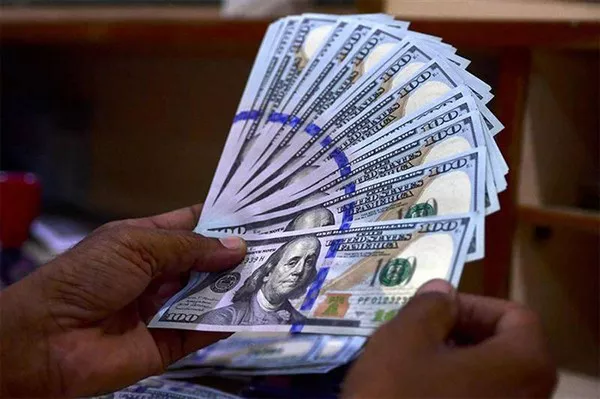Two-dollar bills, often regarded as unique curiosities in the world of currency, have long piqued the interest of collectors and individuals seeking to understand their worth. While they may not be commonly seen in everyday transactions, two-dollar bills have a special place in numismatics and financial history. In this article, we will delve into the value of two-dollar bills, helping you determine how much you might sell one for and what factors influence their price.
The History of the Two-Dollar Bill
The two-dollar bill, featuring Thomas Jefferson on the obverse and Monticello on the reverse, has a storied history. Despite being less frequently encountered in circulation compared to other denominations, it has remained a beloved and collectible piece of American currency.
Early Issuance: The two-dollar bill was first issued in 1862 as part of the United States’ first paper money series. These notes were introduced to help fund the Civil War and were initially issued as Legal Tender Notes.
Redeemable in Silver: Early two-dollar bills, often referred to as “Deuces,” were redeemable in silver and gold, and they featured intricate artwork and designs.
Periods of Limited Issuance: While the two-dollar bill has been periodically issued throughout American history, it has often been subject to periods of limited issuance. This has contributed to its reputation as an uncommon denomination.
Determining the Value of a Two-Dollar Bill
The value of a two-dollar bill is influenced by several key factors, and understanding these elements can help you gauge how much you might sell one for:
Age and Series: The age of the two-dollar bill and its series (i.e., the specific design and year of issue) are important considerations. Older, rarer series are typically more valuable.
Condition: As with any collectible currency, the condition of the two-dollar bill plays a crucial role in determining its worth. Numismatists use a grading scale to assess a bill’s condition, ranging from “Poor” to “Mint State” (MS). Uncirculated, crisp bills with minimal wear tend to be the most valuable.
Rarity: Some two-dollar bill series are scarcer than others, and specific years may have lower print runs, making them more valuable to collectors.
Mintmarks: Mintmarks, denoting the U.S. Mint branch where the bill was printed, can influence value. Bills from rarer mint locations, such as San Francisco or Chicago, may be worth more.
Star Notes: Star notes are replacement notes issued by the Bureau of Engraving and Printing to replace bills that were damaged during production. They are identified by a star preceding the serial number and are often sought after by collectors due to their rarity.
Examples of Notable Two-Dollar Bill Varieties
To provide you with a sense of the diverse world of two-dollar bills and their value, consider the following notable varieties:
1928 Red Seal Deuces: These bills, with a red seal, were among the last United States notes issued in that denomination. They are sought after by collectors for their historical significance.
1953 and 1963 Legal Tender Notes: Two-dollar bills from the 1953 and 1963 series are among the most common and can often be found in circulation. While they may not be particularly rare, they are collected by enthusiasts.
1976 Bicentennial Two-Dollar Bills: In honor of the United States’ bicentennial, the U.S. Mint issued two-dollar bills with special designs. Collectors often seek these bills for their patriotic significance.
Star Notes: As previously mentioned, star notes are replacement bills with star symbols in their serial numbers. They are valued for their rarity and can command a premium, particularly in pristine condition.
Error Notes: Two-dollar bills with printing errors, such as misaligned designs or inverted serial numbers, can be highly desirable to collectors who appreciate the uniqueness of these variations.
Valuation and Pricing
To estimate the value of your two-dollar bill, you can consult various sources, including price guides, auction results, and the expertise of numismatic professionals. Here’s a general sense of the price range for different types of two-dollar bills:
Common Series in Circulated Condition: Two-dollar bills from common series, like those from 1953 or 1963, in circulated condition may have a face value of two dollars, or a slight premium depending on their condition.
Older Series and Scarcer Varieties: Older series or scarcer varieties in well-circulated condition may be worth anywhere from $3 to $10 or more.
Uncirculated Bills: Uncirculated, crisp two-dollar bills from various series can range in value from $10 to $50 or more, with some star notes and rarer series commanding even higher prices.
Error Bills: Two-dollar bills with printing errors can vary widely in value, with some error notes selling for hundreds of dollars or more.
Graded and Certified Notes: For exceptional specimens in high-grade condition, bills that have been professionally graded and certified by reputable grading services may command higher prices due to their documented quality.
Selling Your Two-Dollar Bill
If you’re interested in selling your two-dollar bill, there are several avenues to consider:
Local Coin Shops: Local coin shops often purchase collectible currency, including two-dollar bills. Be sure to research potential buyers and seek fair appraisals.
Online Marketplaces: Online platforms, such as eBay or numismatic forums, offer opportunities to reach a broad audience of potential buyers. Ensure you provide clear images and descriptions of your bill.
Auction Houses: Auctioning your two-dollar bill through a reputable auction house can result in competitive bidding and potentially higher prices.
Collectors and Enthusiast Groups: Engaging with collectors and enthusiast groups can help you connect with individuals who have a passion for two-dollar bills and may be interested in acquiring them.
Conclusion
The world of two-dollar bills offers a unique blend of history, artistry, and value to collectors and enthusiasts. While their worth varies widely based on factors such as age, series, condition, and rarity, there is a place for virtually every two-dollar bill in the world of numismatics. As you explore the value of your two-dollar bill, consider its history and the potential it holds as a piece of American currency, contributing to the rich tapestry of U.S. monetary heritage.


